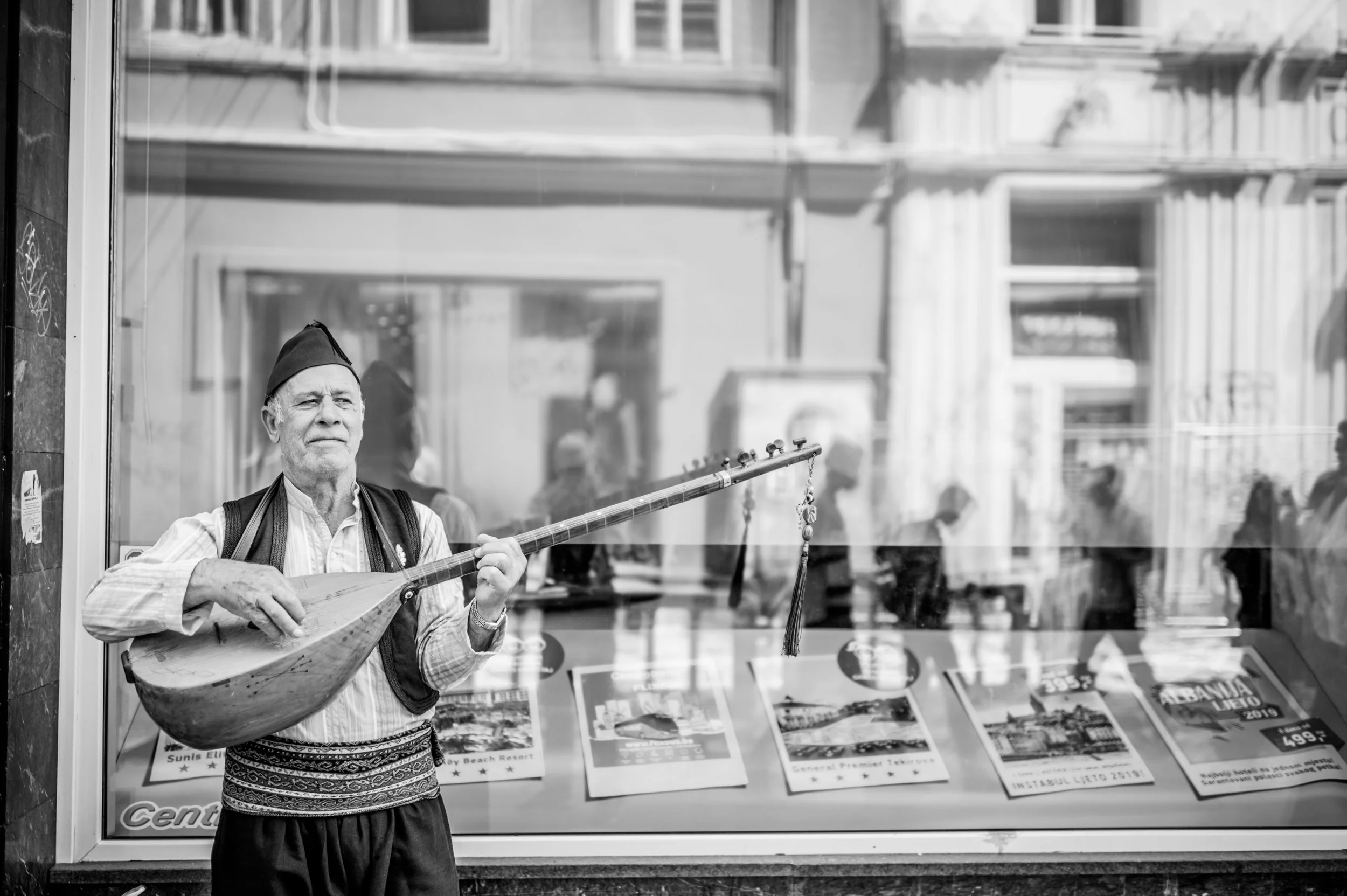
Bosnia and Herzegovina-Sarajevo After Wartime-Photos by The Humans Being Project-1
A cemetery’s markers name the dead below them with Sarajevo in the distance.

Bosnia and Herzegovina-Sarajevo After Wartime-Photos by The Humans Being Project-2
Tufo is the proprietor of a small Arabian horse farm/equestrian club and guesthouse/family restaurant where he lives with his family in the mountains of Sarajevo. He is also a cook and crafts the most beautiful castle style, ornate iron doors you’ve ever seen.

Bosnia and Herzegovina-Sarajevo After Wartime-Photos by The Humans Being Project-3
DJeca Vjetra Restaurant, Guesthouse, and Equestrian Club, Sarajevo.

Bosnia and Herzegovina-Sarajevo After Wartime-Photos by The Humans Being Project-4
Two Sarajevo residents pose together while the elder of the two is on a break from work in the old city.

Bosnia and Herzegovina-Sarajevo After Wartime-Photos by The Humans Being Project-5
A mosque’s minaret rises above the landscape.

Bosnia and Herzegovina-Sarajevo After Wartime-Photos by The Humans Being Project-6
Closeup, Sarajevo man on break.

Bosnia and Herzegovina-Sarajevo After Wartime-Photos by The Humans Being Project-7
People come and go on one of the city’s main thoroughfares in Central Sarajevo.

Bosnia and Herzegovina-Sarajevo After Wartime-Photos by The Humans Being Project-8
Deep in conversation, a trolley driver focuses intently on the road ahead. Communist-era trolleys run the length of the city and are a common and inexpensive form of transport.

Bosnia and Herzegovina-Sarajevo After Wartime-Photos by The Humans Being Project-9
Apartments buildings bare the scars of bullets and shillings.

Bosnia and Herzegovina-Sarajevo After Wartime-Photos by The Humans Being Project-10
A local street musician at work near the old city. He plays a traditional instrument of the Balkans called a shargia that originated in Bosnia and Herzegovina during the rule of the Ottoman Empire.

Bosnia and Herzegovina-Sarajevo After Wartime-Photos by The Humans Being Project-11
Mountains rise above the thriving downtown shopping and hotels district.

Bosnia and Herzegovina-Sarajevo After Wartime-Photos by The Humans Being Project-12
Sarajevo resident opens herself cautiously to the camera.

Bosnia and Herzegovina-Sarajevo After Wartime-Photos by The Humans Being Project-13
Another apartment building tells the story of war.

Bosnia and Herzegovina-Sarajevo After Wartime-Photos by The Humans Being Project-14
Tufo’s daughter Sanja works in the lounge of the restaurant before opening hours. She is on hand most days the restaurant is open, helping with everything.

Bosnia and Herzegovina-Sarajevo After Wartime-Photos by The Humans Being Project-15
A house in the mountains across the restaurant. This area is considered to be a part of the old city of Sarajevo.

Bosnia and Herzegovina-Sarajevo After Wartime-Photos by The Humans Being Project-16
Sanja looks up from her work.

Bosnia and Herzegovina-Sarajevo After Wartime-Photos by The Humans Being Project-17
The Tunnel Museum in Sarajevo is dedicated to preserving the hand dug tunnel that kept the city alive during the siege. It took six months to dig out the 800 meter stretch that ran under the then Serb controlled airstrip. Laborers worked under near constant shelling and often with water up to their wastes that had to be emptied one bucket at a time. Once finished, the one and a half meter high tunnel was used to deliver essential food, gas, and weapons into the city that had no other way in. It proved crucial to the survival of its inhabitants.

Bosnia and Herzegovina-Sarajevo After Wartime-Photos by The Humans Being Project-18
Longtime international volunteer, author, and Bosnian eco tourism specialist Tim Clancy bends down inside the War Tunnel. Tim delivered supplies through the tunnel on multiple occasions during the war.

Bosnia and Herzegovina-Sarajevo After Wartime-Photos by The Humans Being Project-19
A Muslim gravestone and the city in the distance.



















